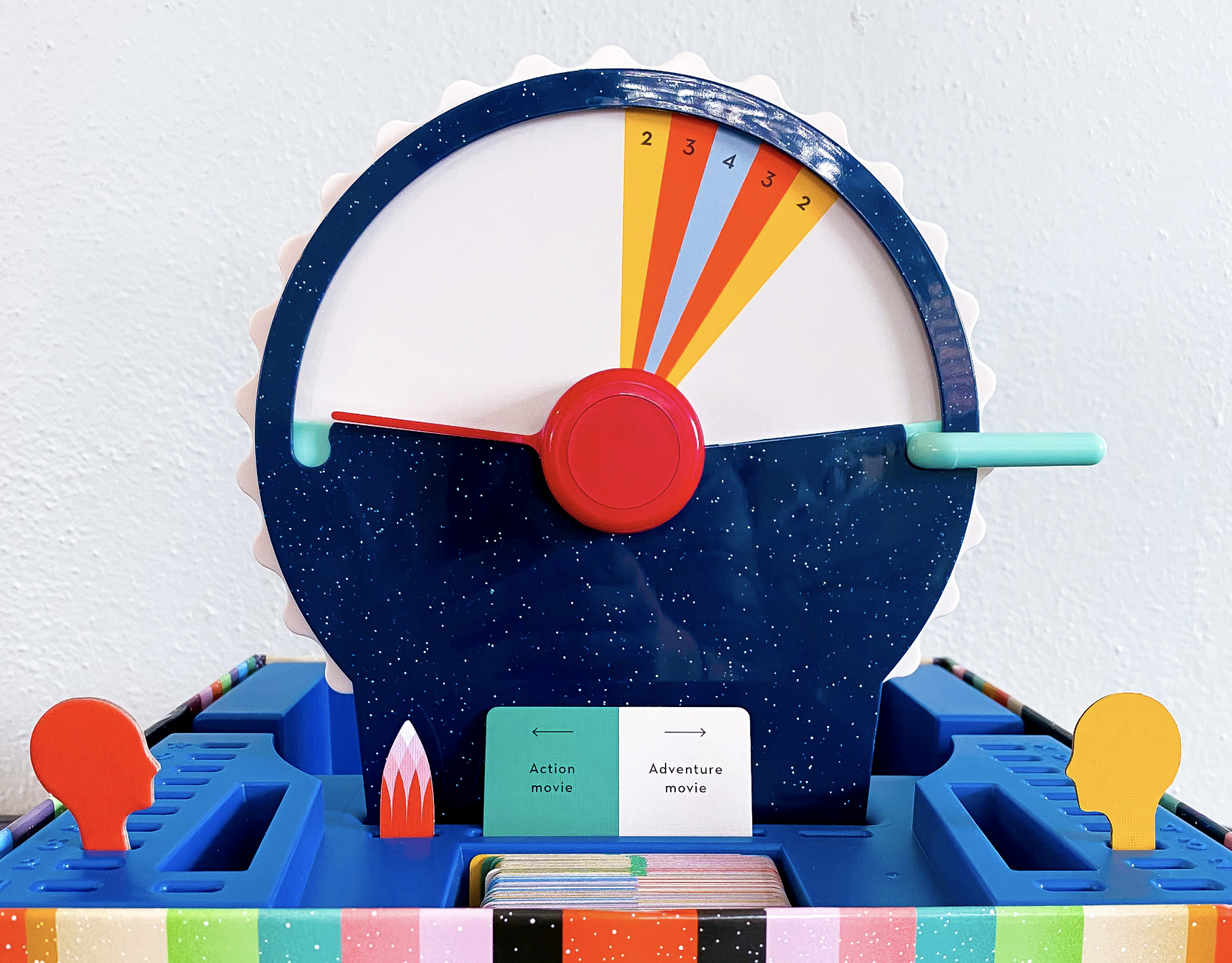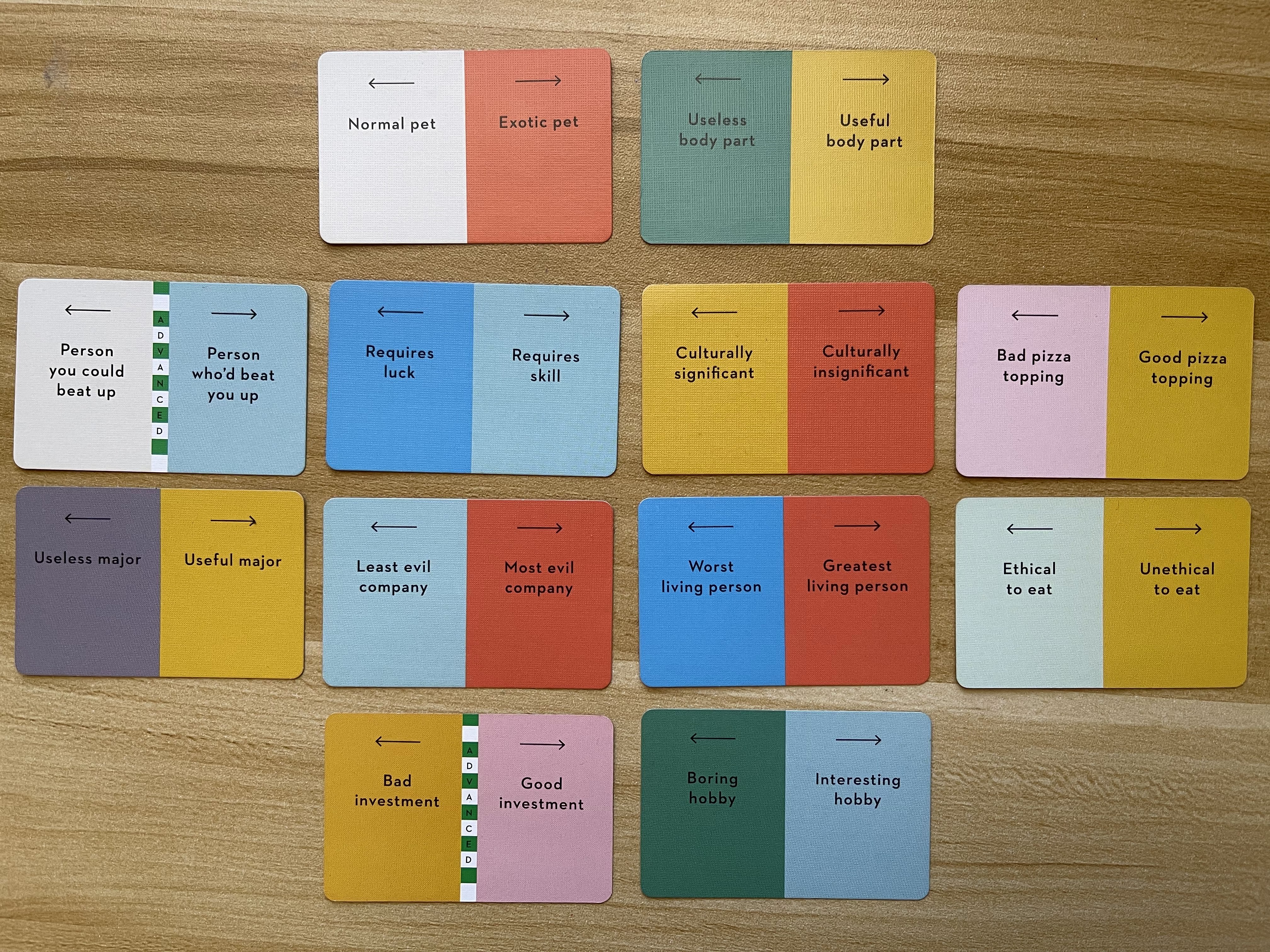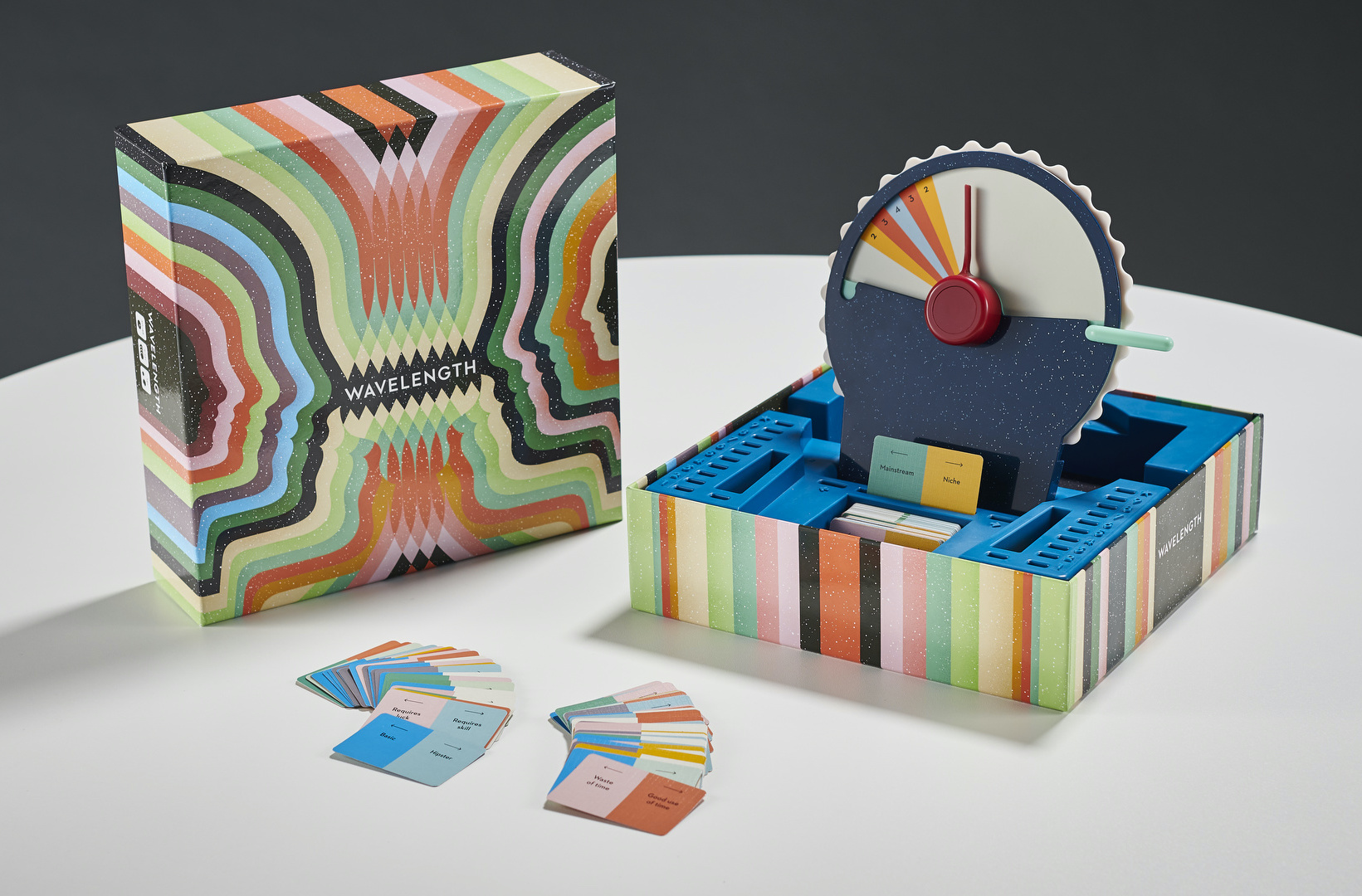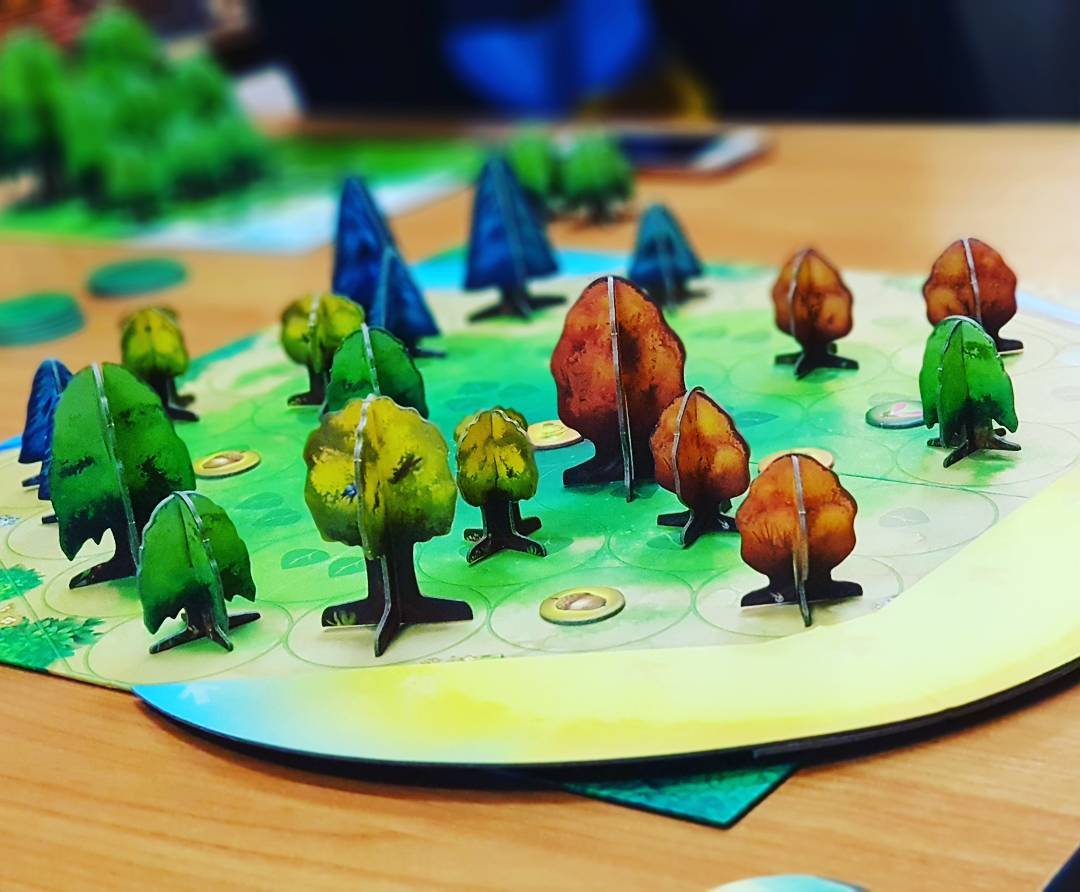Welcome to the first post of a new series that I’m calling Gaming through the Pandemic! Over the past year, COVID-19 upended many of our social lives and forced us to find new ways to connect with our friends and family digitally. During this time, I’ve had a blast organizing and playing board and party games online with friends, coworkers, and family. In this series, I’d like to introduce some of these amazing games, as well as instructions on how you can also organize your own sessions!
The first game on our agenda is Wavelength. Let’s jump right in!
How to Practice Telepathy
You start by asking: on a scale of 1 to 100, to what extent is a hot dog a sandwich? Someone on your team argues that it’s definitely less than 40%, since the bun doesn’t come in two separate pieces. Your friend whips out the sandwich alignment chart and swears that she knows you are a structural rebel and definitely consider hot dogs to be more of a sandwich than not. Your team finalizes a guess at 60% and lets you do the dramatic reveal - the marker reveals 3 points! Not perfect, but fairly close. Cheers and high-fives go around the room as your friend wears the smug “I told you so” look on her face.
The premise of Wavelength couldn’t be more simple. Everyone splits into two teams, and takes turns choosing a psychic to receive a random prompt in the form of a spectrum, such as Bad habit to Good habit, Dictatorship to Democracy, or Optional to Mandatory. They spin the wheel to randomly set the scoring zone and peek at its location (making sure no one else can see). Now comes the hard part - thinking of a clue to give so that their teammates can make a guess on the spectrum right in the center of the scoring zone for maximum points!

The other team gets to be fully involved during this time too. Once the current team makes their guess by turning the dial, the opposing team has to decide if the true answer is to the left or right of the guess, gaining a bonus point if they are correct. Now comes the big reveal - a tap on the screen opens it to reveal the scoring zone! Depending on the result, either cheers start erupting from your team, or your friends demands you to explain yourself and your horrible hint. After many rounds of mind-reading, absurd debates, agonizing decisions, and high-fives, the team that reaches 10 points first wins!
A Game Show in a Box
Wavelength is the perfect party game. It’s so easy to grasp that you can jump right into the first round without explaining any rules and have everyone understand how it works extremely quickly. Not only is it very flexible in player count, people can also join and leave the game as they wish.
Playing Wavelength often leads to some very interesting and hilarious conversations and debates on various topics that are rare to come up organically when talking. Let’s also not forget about one of its best parts - it is one of the few board games that actually allow you to learn more about everyone involved and their idiosyncratic personalities, outlandish preferences, and hot takes. Wavelength manages to do this while still preserving the deep strategic element of word game sorcery that I love.

From my experience, the best prompts are the ones that involve a high degree of subjectivity, as those result in the most interesting and heated debates. While a spectrum like Hot to Cold might be great to demonstrate how the game works, it’s when you get to prompts like Ethical to eat to Unethical to eat where the game starts to shine, leading to some oddly profound discussions. What hint will you give for a company that’s 65% evil, or what’s something that’s 30% skill and 70% luck? The level of mindgames even jumps to a new level when people start to wonder - are they giving their hint based on their own opinions, tailoring it to their teammates, or trying to conform to public opinion?
Some of the hilarious moments I’ve had while playing Wavelength I still vividly remember to this day. One time, one of my friends started lambasting me in mock offence when I mentioned “Communication Studies” to be closer to the useless major side than the useful major side (she majored in communication studies) as everyone else started cracking up and taking sides. Another time, the spectrum was from “Worst living person” to “Greatest living person”, and the psychic gave the hint “David”, who was one of our friends playing the game with us. Uproarious laughter erupted around the room as we debated the virtues and shortcomings of our friend David and had him make the final guess on the dial (He managed to be pretty accurate!).
While on the surface it’s a game about telepathy, Wavelength is truly a test of empathy - can you understand how your friends think?
How to Play Wavelength Online
The easiest way to play Wavelength online with your friends is for everyone to hop onto a voice/video call and have someone in the group create a room on the Longwave web app. After sharing the link, everyone can join the room and start the game.
Another way to enjoy the game is to use the official Wavelength app designed by the creators. However, as of July 2021, the app is still currently in beta and requires a bit of work to get it installed.
Additional information
- Players: 4 - 12+
- Time: 30 minutes
- Categories: Party Game, Creativity, Discussion, Team vs. Team
- Links: Video, Amazon, BoardGameGeek
Other Gaming through the Pandemic articles
- Wavelength
- Decrypto (coming soon)
- Monikers/Fishbowl (coming soon)
- Blank Slate (coming soon)

 An Introduction to Modern Board Gaming
An Introduction to Modern Board Gaming